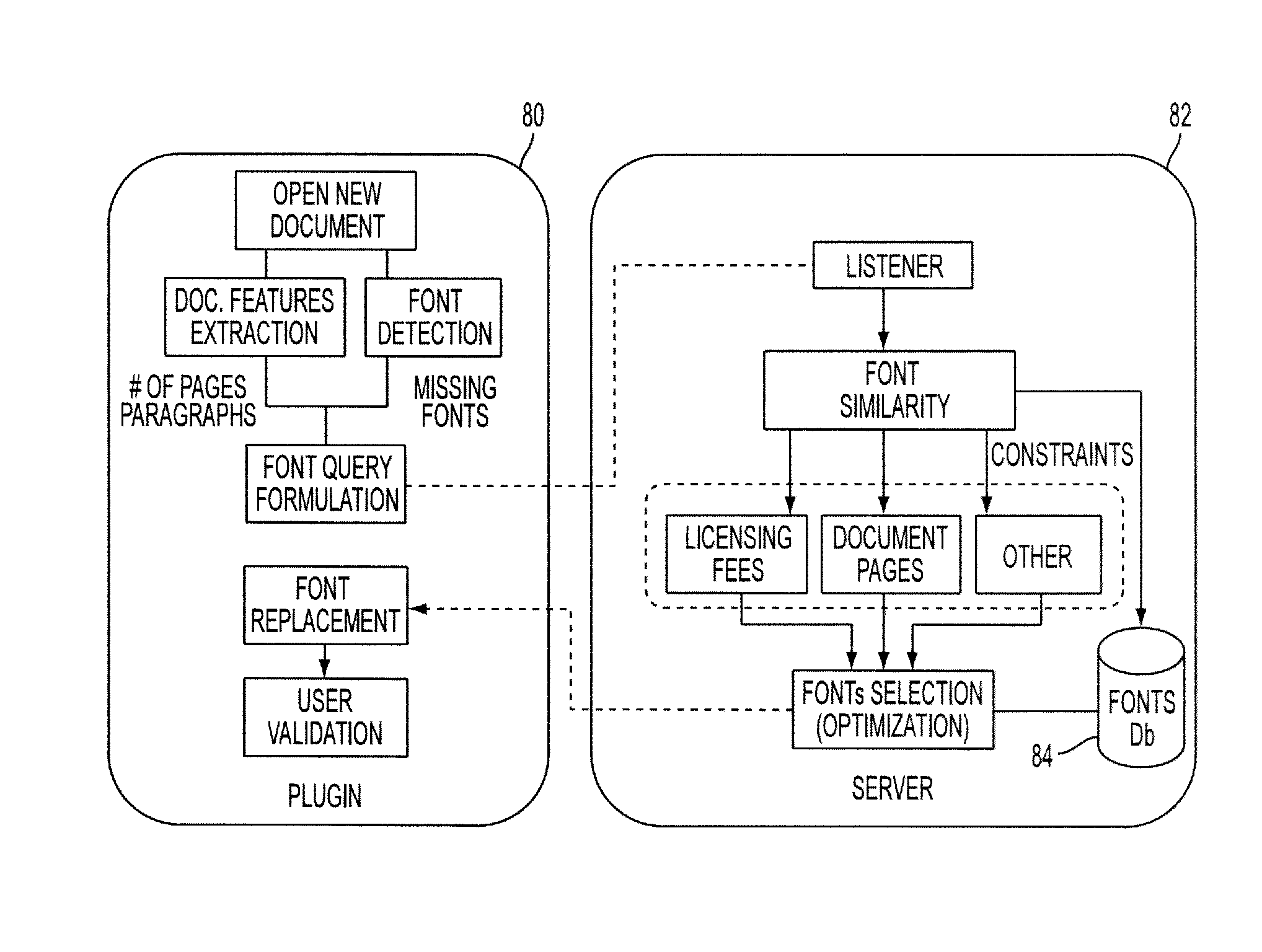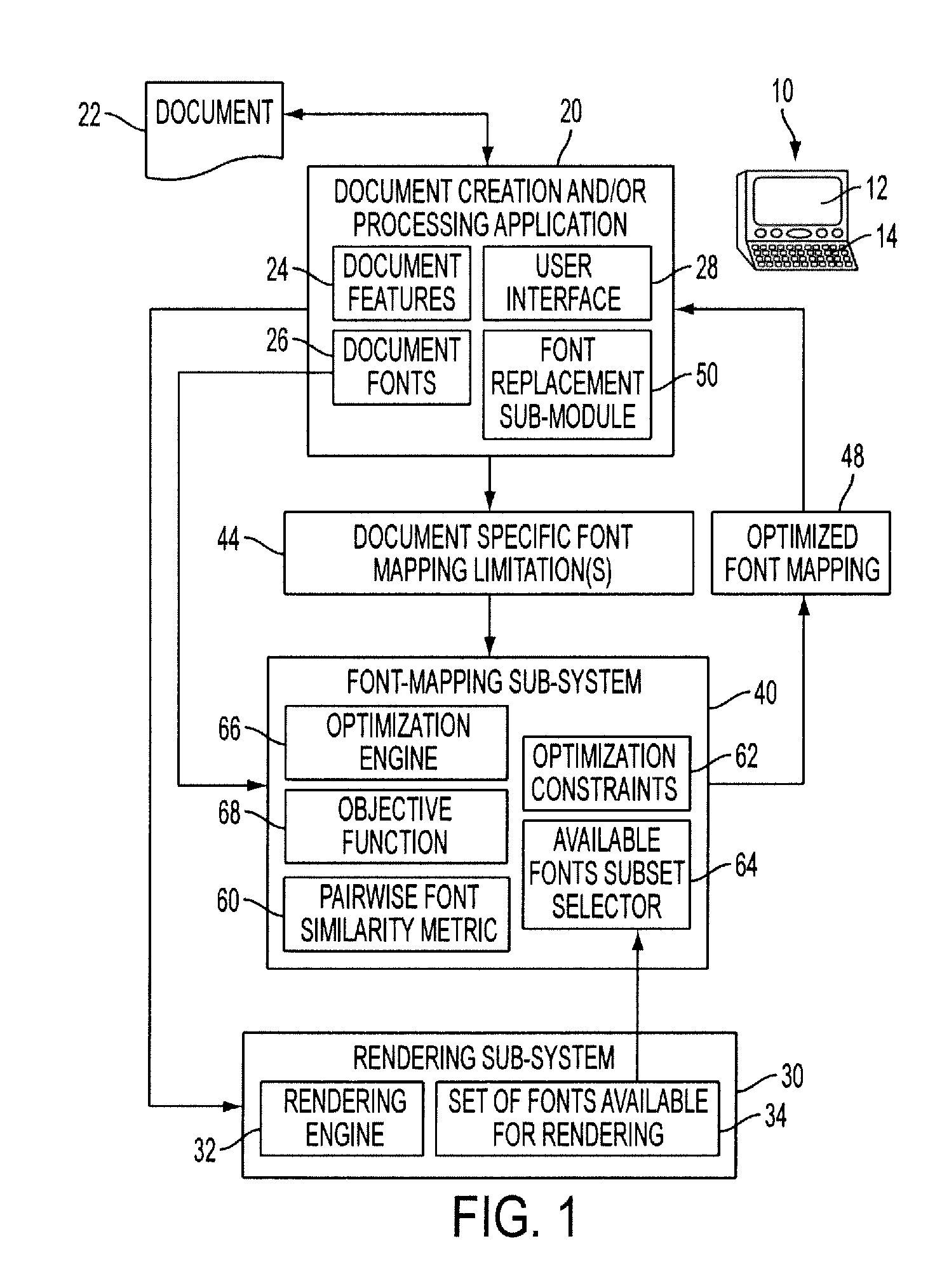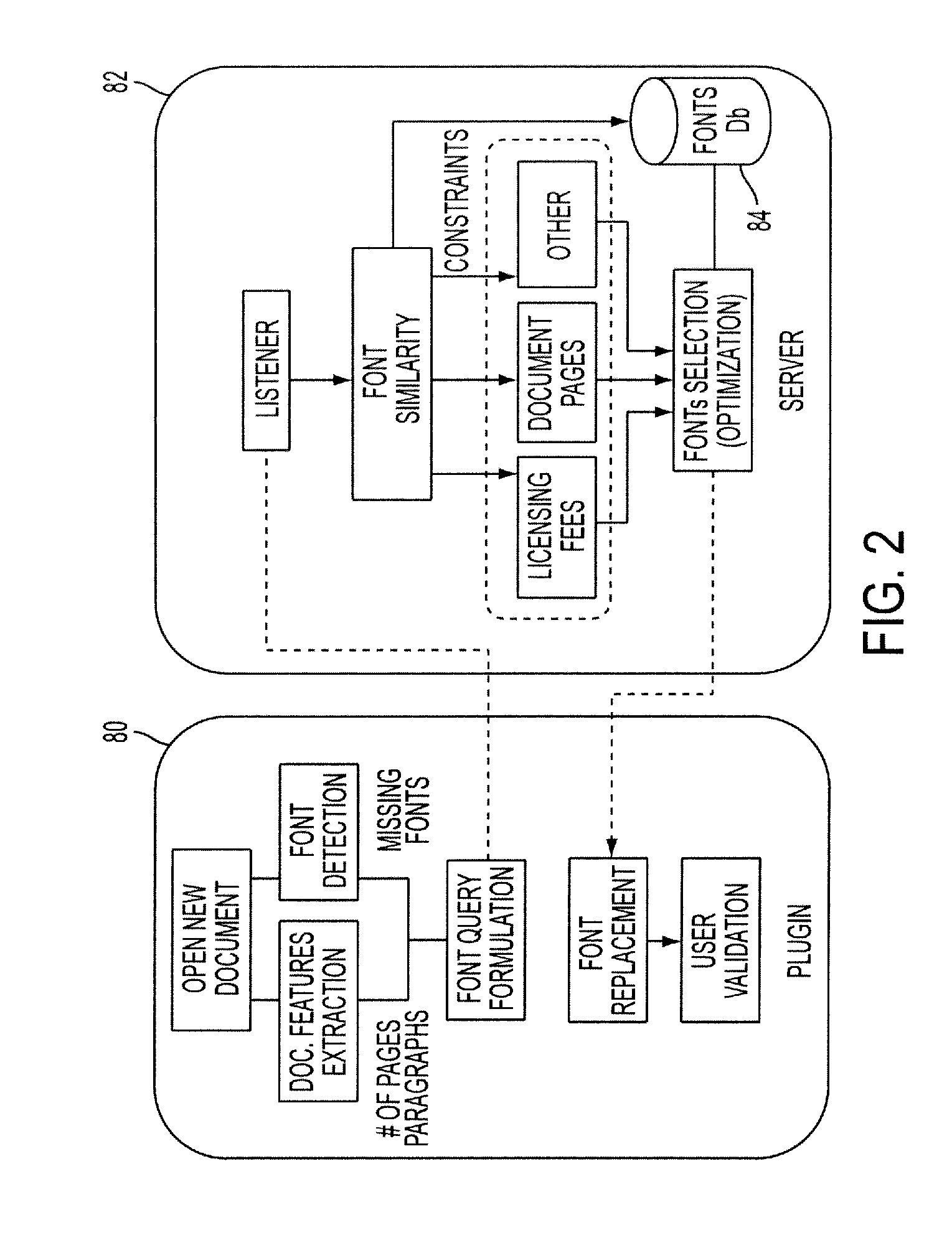Dynamic font replacement
a font replacement and dynamic technology, applied in the field of dynamic font replacement, can solve the problem that the font used in a created document is unavailable to the rendering system, and achieve the effect of reducing the number of fonts
- Summary
- Abstract
- Description
- Claims
- Application Information
AI Technical Summary
Benefits of technology
Problems solved by technology
Method used
Image
Examples
Embodiment Construction
[0013]It is recognized herein that a disadvantage of existing font mapping approaches that select a replacement font based on a font similarity measure is that these mapping approaches generally operate globally, without reference to the particular document being rendered. That is, document-specific considerations are not taken into account. This has generally not been considered to be problematic, since selection of a most similar font, as measured by a suitable font similarity metric, is expected to provide an optimal result.
[0014]However, it is recognized herein that in some document-specific instances, this is not the case. For example, in some documents different fonts are intentionally used to represent different types of textual content. By way of just one illustrative example, in a script for a play, dialog content attributed to different actors may be distinguished by using different fonts. If the font mapping maps these different document fonts to a single most similar rep...
PUM
 Login to view more
Login to view more Abstract
Description
Claims
Application Information
 Login to view more
Login to view more - R&D Engineer
- R&D Manager
- IP Professional
- Industry Leading Data Capabilities
- Powerful AI technology
- Patent DNA Extraction
Browse by: Latest US Patents, China's latest patents, Technical Efficacy Thesaurus, Application Domain, Technology Topic.
© 2024 PatSnap. All rights reserved.Legal|Privacy policy|Modern Slavery Act Transparency Statement|Sitemap



